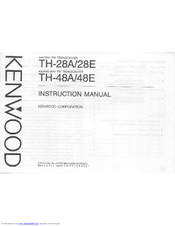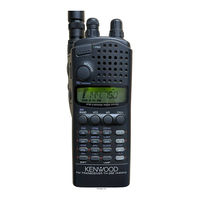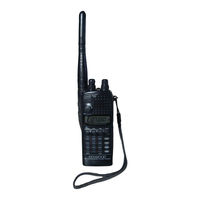User Manuals: Kenwood TH-48A Ham Radio Transceiver
Manuals and User Guides for Kenwood TH-48A Ham Radio Transceiver. We have 5 Kenwood TH-48A Ham Radio Transceiver manuals available for free PDF download: Instruction Manual, Manual
Kenwood TH-48A Instruction Manual (65 pages)
144MHz FM Transceiver
Brand: Kenwood
|
Category: Transceiver
|
Size: 35.55 MB
Table of Contents
Advertisement
KENWOOD TH-48A Instruction Manual (65 pages)
Fm transceiver
Brand: KENWOOD
|
Category: Transceiver
|
Size: 35.55 MB
Table of Contents
Kenwood TH-48A Instruction Manual (62 pages)
144 MHz FM VHF; 430 MHz FM UHF;
Brand: Kenwood
|
Category: Transceiver
|
Size: 1.15 MB
Table of Contents
Advertisement
Kenwood TH-48A Instruction Manual (64 pages)
144 MHz FM TRANSCEIVER , 430/440 MHz FM TRANSCEIVER
Brand: Kenwood
|
Category: Transceiver
|
Size: 1.55 MB
Table of Contents
Kenwood TH-48A Manual (60 pages)
Brand: Kenwood
|
Category: Transceiver
|
Size: 1.19 MB
Advertisement




